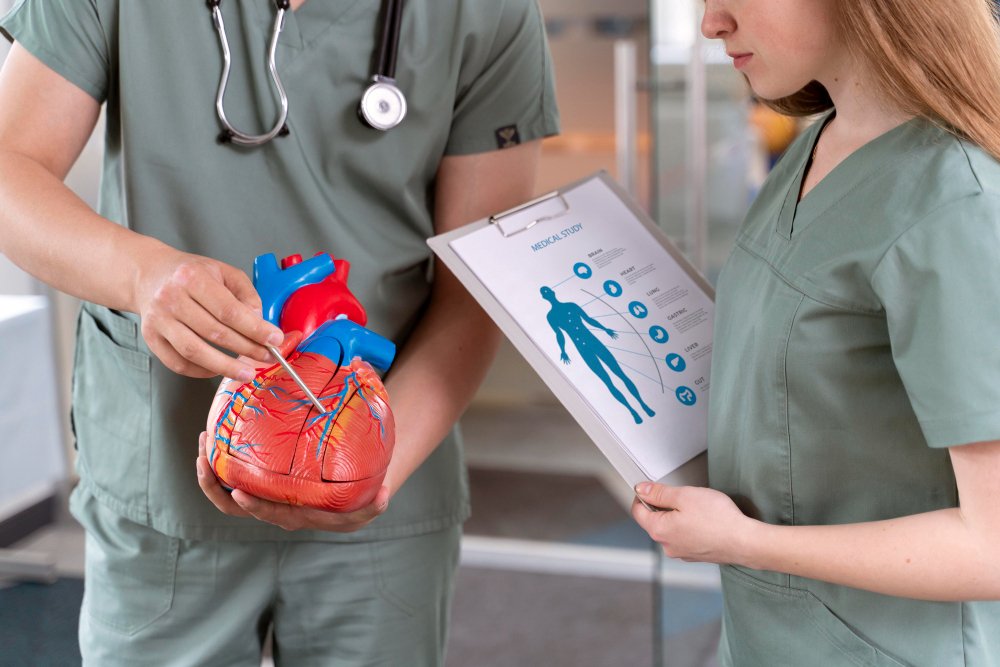What is an Aortic Aneurysm?
The aorta is the body’s largest blood vessel, carrying oxygen-rich blood from the heart to the rest of the body.
An aortic aneurysm occurs when a section of the aorta becomes weakened and bulges outward, similar to a balloon swelling under pressure.
Over time, the aneurysm can grow larger, increasing the risk of rupture (bursting) or dissection (a tear in the wall), which are life-threatening emergencies.
Causes and Risk Factors
Aortic aneurysms can develop due to:
- Atherosclerosis (hardening of arteries)
- High blood pressure
- Genetic conditions (e.g., Marfan syndrome, Ehlers-Danlos syndrome)
- Age-related degeneration of blood vessel walls
- Smoking
- Family history of aneurysms
Men over 60, especially those with these risk factors, have a higher likelihood of developing an aortic aneurysm.
Symptoms – Often Silent
Many patients do not experience symptoms until the aneurysm becomes large or starts to leak. When symptoms do appear, they may include:
- Deep, persistent chest, back, or abdominal pain
- A pulsating feeling in the abdomen
- Shortness of breath or difficulty swallowing (in some thoracic cases)
Because aneurysms are often silent, early detection through regular screening is vital; especially for those at high risk.
Diagnosis
Aortic aneurysms are usually detected via imaging tests such as:
- Ultrasound (common for abdominal aneurysms)
- CT Scan or MRI (detailed view of size and location)
- Echocardiography (for ascending aortic aneurysms)
Treatment Options:
The treatment depends on the size, location, and growth rate of the aneurysm, as well as the patient’s overall health.
1. Monitoring (Watchful Waiting)
Small aneurysms (less than 5 cm in diameter) that are not causing symptoms are often monitored with regular imaging and controlled through:
- Blood pressure management
- Lifestyle changes (quitting smoking, healthy diet, regular exercise)
2. Surgical Repair
If the aneurysm is large, growing quickly, or causing symptoms, surgical intervention is recommended.
Two main surgical approaches include
- Open Surgical Repair:
- The damaged section of the aorta is replaced with a synthetic graft.
- Usually requires a longer recovery time but offers durable results.
- Endovascular Aneurysm Repair (EVAR/TEVAR):
- A minimally invasive procedure using a stent-graft inserted through a small incision in the groin.
- Suitable for selected patients and offers quicker recovery.
Why Timely Treatment Matters
Once an aortic aneurysm ruptures, the survival rate drops dramatically. Elective repair before rupture offers the best outcome.
Dr. Brajmohan Singh’s Expertise in Aortic Aneurysm Treatment
With extensive experience in BIMA Bypass surgery and complex cardiothoracic procedures, Dr. Brajmohan Singh specializes in both open and minimally invasive aneurysm repairs. His patient-focused approach combines precise surgical skill with personalized care to ensure the safest and most effective outcomes.

